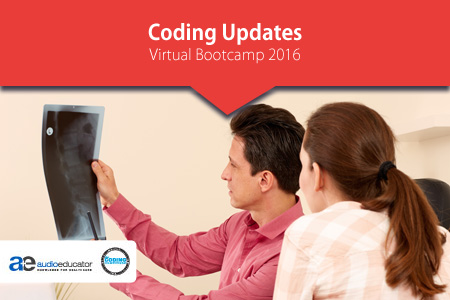From an Orthopedic Surgeon’s perspective, ICD-10 is full of faults, which are easily recognizable particularly when trying to interpret the coding manuals as they are presently. As most Coders probably know by now, 2017 will see some major coding changes and updates. The list of recommended additions, deletions, revisions of all the codes in ICD-10 is roughly 1900, give or take in number.
Orthopedic codes represent about 25% of codes found in ICD-10. It is important to clearly specify where the fracture is located (e.g. ramus of right mandible), and laterality (e.g. right ilium). In the example of an ankle fracture, it is important to describe whether it was displaced or nondisplaced, and whether it was a fracture of the medial malleolus, lateral malleolus, bi-malleolar or tri-malleolar fracture of the right or left lower leg. For example, a non-displaced right lateral malleolar fracture would be coded to S82.64XA. Additional codes that could be extracted from your documentation would specify if the fracture resulted from a fall (e.g. W17.89XA Other fall from one level to another, initial encounter), and even the location of the fall or activity (e.g. Y93.44 Activity, trampolining) when you provide these details in your ED note.
ICD-10 Guidelines provide that fractures not specified as displaced or non-displaced should be coded to displaced. Fractures not specified as open or closed are coded to closed. The ICD-10 codes for fractures use a 7th character to indicate, among other things, initial versus subsequent encounters for fractures. Initial encounter is used while the patient is receiving active treatment for the fracture. Initial encounter may also be assigned when a patient is transferred to another facility (e.g. trauma center) for higher level of care during the period of active treatment. A subsequent visit code would be used if an x-ray was being obtained to check healing status of fracture or if there was only a cast change or removal.
Documentation for subsequent encounters should describe routine healing, delayed healing, mal-union or non-union of fractures. The suffix “S” for sequela is appropriate for other late effect manifestations or complications of an injury, exclusive of delayed healing, mal-union or non-union of fractures.
For a complete update on 2017 CPT and ICD-10 Pathway, attend our online coding event Virtual Boot Camp. This session will review the CPT® coding changes for the musculoskeletal system and orthopedic surgery for 2017. Information from the AMA CPT® Symposium will be shared with changes in Spine Surgery, Pain Management, Physical Medicine and Rehabilitation and Podiatry. This will allow attendees to prepare for these code changes and effectively be ready for January 1st.




